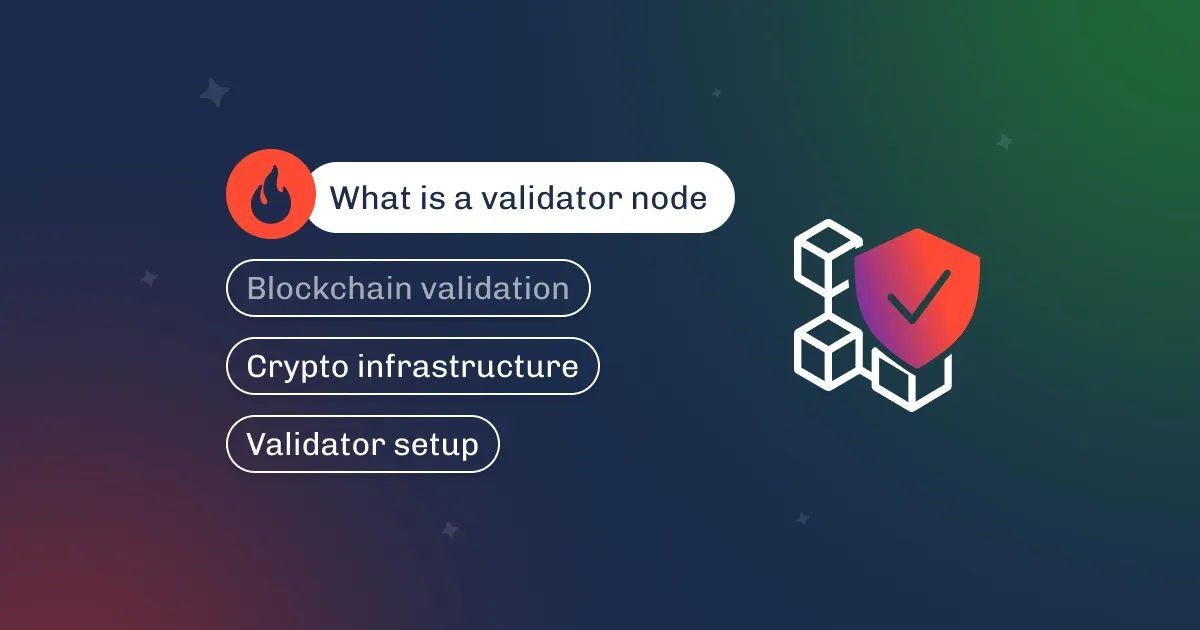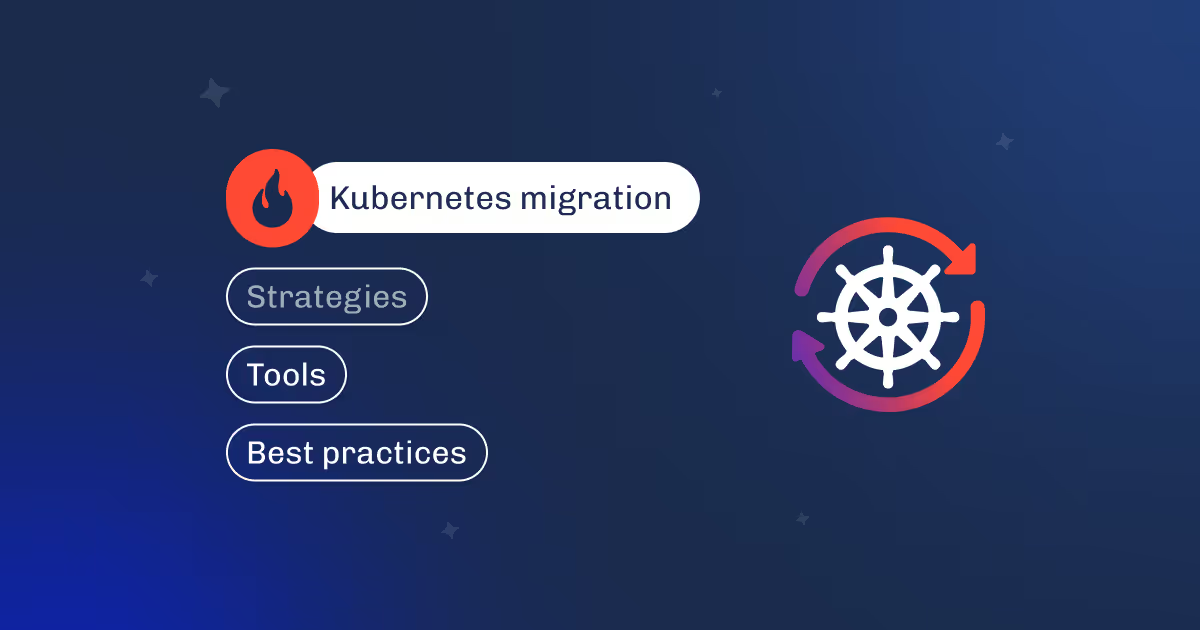

Before your project starts growing efficiently, you try to implement managing practices that are not quite common for your everyday processes and activities. To make these tryings successful, you should know when and what configuration should be implemented with minimal risks. For example, starting with CI/CD without a responsible person and settled procedures will only bring more chaos to your application deployments.
We offer to take a look at the Infrastructure as Code (IaC) practice that is applicable to any project, even in the early stages of the life cycle. We’ll show you the most unobvious connections between IaC and the maturing processes of your infrastructure and take a glimpse at future trends of this technique.

For a kickoff start, let’s agree upon infrastructure as code definition. To put the IaC definition simply, consider it as a way of automating the management of the underlying infrastructure by creating, editing, and modifying a specially prepared code base. This approach is possible due to the ability to codify and automate the provisioning, configuration, and control of underpinnings.
Infrastructure as Code allows you to treat your infrastructure as developers handle application code. Rather than manually configuring servers, storage, or networks, everything is described in a set of files and maintained using version control systems like Git.
IaC is impossible without its tools: Terraform, AWS CloudFormation, and Ansible, for example. They allow teams to define their infrastructure declaratively or imperatively, ensuring configurations are applied identically across environments.
What does it mean? IaC is a true child of both the development and operations worlds, applying standards and approaches of high-standard coding to infrastructure management. And, we have to admit, it works, as according to a 2023 HashiCorp survey, 90% of respondents stated that IaC has dealt with twists of infrastructure management, making their deployment practices a way more consistent.
Development teams
This tool takes infrastructure closer to the developers than ever before. With IaC code, developers feel more familiar and comfortable managing infrastructure directly, integrating it with their development workflow.
They can provide environments quickly and consistently, eliminating the need to rely on system administrators, which speeds up dev cycles and enhances productivity. With good old version control systems, dev teams enable better collaboration, auditing, and tracking of infrastructure changes.
Operations teams (DevOps and SysAdmins)
IaC deployment is all about automation, so Ops guys benefit from it by getting rid of repetitive tasks like server provisioning. Also, they get reduced manual errors and ensure consistency across environments.
Infra as code reduces configuration drift between development, staging, and production environments, making infrastructure management more efficient and error-free. It also makes space for Ops teams for high-value tasks such as scaling, monitoring, and optimizing.
Security teams
Security policies and access controls are embedded directly into the infrastructure code with IaC automation. Thus, the same set of rules is applied everywhere and you have only one source of errors—the code—if they occur.
Security teams also set IaC as a rule for better visibility and audibility required for compliance and incident response demands.

Cloud architects
IaC provides cloud architects with a toolset to design the infra of their dreams. With IaC, they can easily create reusable modules that enable rapid scaling of resources based on demand.
This flexibility helps architects adapt their projects to changing workloads and traffic patterns.
C-level executives (CIOs, CTOs)
For executives, the primary benefit of IaC is cost optimization.
By automating infrastructure provisioning and management, organizations reduce the labor costs associated with manual configurations. IaC also allows for precise resource allocation, minimizing waste, and optimizing cloud costs.
Furthermore, IaC enhances scalability and disaster recovery capabilities, which are critical for business continuity.
That’s enough about what is IaC, let’s move deeper into the topic!
While the primary benefits of IaC—such as speed, cost optimization, scalability, and consistency—are widely recognized, several less obvious advantages emerge, especially as organizations scale:
Infrastructure as Code inherently documents your infrastructure setup through code. This means that your entire system configuration is easily accessible, reviewable, and versioned in your repository.
If team members leave, they don’t take critical infrastructure knowledge with them, as it’s stored in the infrastructure code, reducing the risk of "tribal knowledge" (when the info about how the system works in practice is passed from one person to another orally).
Downsides: Your devs might be boiled up
While infra as code empowers developers to manage infrastructure, this can create a cognitive overload for them. They must now balance application development with infrastructure management, which can lead to errors or slowdowns. This blurring of roles can make it harder for developers to specialize.
DevOps infrastructure as code encourages the use of code-agnostic tools like Terraform, which can manage multi-cloud environments, mitigating the risk of being tied to a single cloud provider. This flexibility allows businesses to switch or combine cloud vendors more easily, enhancing their bargaining power with providers. Drop the price, or we’ll go to your competitors, they say!
Downsides: Reduced lock-in—increased complexity
Multi-cloud means more branched and even horizontal structures that need to be handled all at once. IaC cloud deployments often require waiting for the entire infrastructure to spin up or tear down, which slows down the feedback loop compared to the traditional dev model. Debugging infrastructure issues can be particularly difficult when multiple interdependencies exist, especially in complex environments. To make even complex structures simple and manageable, it’s a true engineering art.

Security measures such as encryption, access controls, and firewalls are consistently applied across all environments. Also, IaC provides a rapid way to recover infrastructure in the event of a failure. Since infrastructure is defined in code, it can be redeployed or restored with minimal downtime, which is crucial for business continuity.
Downsides: IaC is not a magic pill for security and maintainability
As IaC is implemented across multiple teams, managing, maintaining, and tracking infrastructure code may become complex. This is the problem that’s core for any version control that aims at automation. Multiple teams working on different infrastructure codebases can introduce inconsistencies, leading to challenges in version control and role-based access management (RBAC). And they should be overcome to make the whole process work for you.
When it comes to infrastructure as code, DevOps engineers have a word or two to share. It’s their bread and butter, their headache if it’s done wrong, and a blessing if it works right. Here are some thoughts collected from different engineers regarding the role of infrastructure as code in DevOps:
“It helps to build viable infrastructures from scratch and track how they evolve. Your dev team might make any “we need a new component” decision, yet you can show them a way, a framework of relations to implement it together. It’s a great teamwork tool where each can unfold the vision of the app we maintain.”
“DevOps IaC is like a playground where you build a sports car to achieve some goals. It’s your garage, where you can dig into the system as deep as you wish and change the configurations between components, add new ones, delete deprecated ones, and much more. It’s very versatile and engineer-friendly!”
“What is IaC in DevOps? It’s code that I can bring to any team in my company, and it would give the whole picture of how and what works from the inside. Would somebody, except me, understand it from tip to toe—that’s completely another question!”
.svg)

.svg)
.svg)
.svg)

Most of these projects involved IaC by our experts, be sure to check them out!
So, there are only a few views on this DevOps infrastructure tool. We know that somewhere there is an IaC DevOps hate, but it’s not here, at Dysnix. It’s been a golden rule for a very long time for our engineers.
Good tools in experienced hands bring pleasant work and the best results, and this observation is true for each corner of the infra ecosystem. We prefer the classic set of IaC tools:
Cloud vendors prepare their toolbox for the needs of IaC:
The functions and characteristics of these and some other tools are described in the table below.
| Name | Languages | Function | Approach | Infrastructure Type |
|---|---|---|---|---|
 |
HCL + TypeScript, Python, Java, C#, Go with CDK | Provisioning | Declarative | Immutable |
 |
JSON, YAML + TypeScript, Python, Java, .NET, and Go with CDK | Provisioning | Declarative | Both |
 |
Python, Ruby, YAML | Configuration management | Imperative | Mutable |
 |
PuppetDSL, YAML | Configuration management | Declarative | Mutable |
 |
Ruby | Configuration management | Declarative | Mutable |
Reading Gregor Hohpe's "The Architect's Elevator" is a pleasure and a source of the community’s pioneering opinions. Here’s what interesting we’ve distilled for you regarding future trends of IaC.
The traditional scope of IaC is expanding to include more than just the infrastructure layer. "Architecture as Code" and “Infrastructure from Code” are emerging as broader concepts where not just servers and networks, but entire architectural patterns (like microservices, data flows, or API interactions) can be defined and controlled via code, or an application itself can be a source for cloud configurations. Applying the same principles of version control to architecture as a whole, not just infrastructure, is becoming a new standard.
The trend points to a future where infrastructure becomes a key focus, treated with the same importance as software development itself. Tools and methodologies are evolving to ensure that infrastructure receives the same attention, rigor, and automation that application code has enjoyed. But that would be impossible without overcoming organizational resistance.
Despite its benefits, the adoption of IaC can face resistance, particularly in organizations with deeply ingrained traditional processes. Transitioning to IaC and architecture as code requires not only technical changes but also significant cultural shifts. So you’d better start now!
This flexibility is key in modern environments where applications are often distributed across multiple clouds or involve complex microservice architectures. IaC enables infrastructure to be composed of modular building blocks, much like how microservices are handled in application development.
We explored the Infrastructure as Code definition, features, benefits, trends, and tools, diving into its importance for DevOps and its evolving role in modern architecture.
To avoid typical pitfalls of IaC implementation and enter the new era of your project’s growth, call on Dysnix experts to deal with any infrastructure challenges.
As always, thanks for reading and staying with us!






